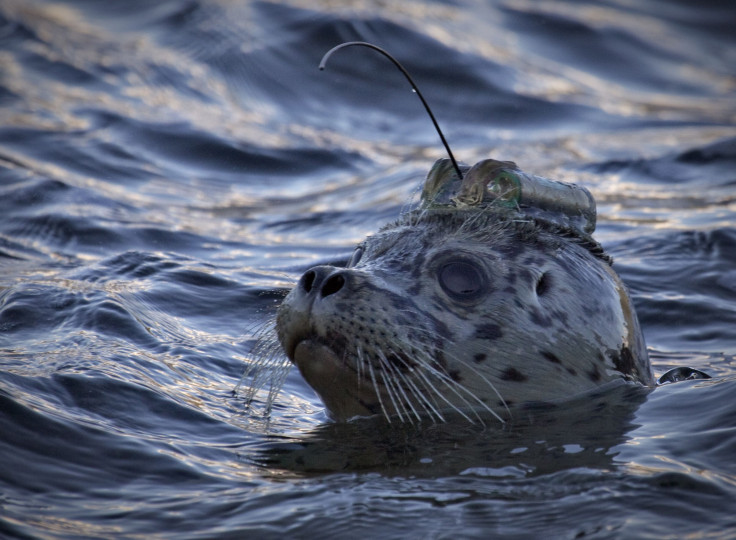Seals With Sensors Help Scientists To Collect Data From Remote Area In Antarctica

Scientists are taking help from seals equipped with sensors on their foreheads for collecting data from some of the most remote corners of the world for gathering information with regards to advancing research on global warming, ice cover and weather forecasting. According to the data provided by the University of St. Andrews, Sea Mammal Research Unit, Scotland that has helped in designing the sensors, more than 1,000 southern elephant seals sporting the non-invasive sensors on their foreheads have traversed the remote parts of the world and has sent back the data to the researchers via the satellite since the year 2004. These sensors are uniquely designed in such a way that it can only be attached to the animals and fall off when the seals moult.
The Southern elephant seals are massive creatures who weigh near about 8,800 pounds and are more than 20 feet long .They are the residents of sub-Antarctic and Antarctic waters. Mike Fedak, head of the Sea Mammal Research Unit at St Andrew’s University says, “They are taking data from places where there has been virtually no data before. It’s unique. This data can be used in lots of different ways including for measuring the movement of glaciers, which impacts on the world’s oceans.”
Dr. Lars Boehme, Lecturer from the St Andrews Sea Mammal Research Unit adds, "The information sent back to us gives us details about the seal's immediate physical environment. It's like tweeting.” The information gathered so far constitutes of 400,000 environmental profiles, making up one of the largest databases of polar oceans and recently the international team of researchers involved have launched the portal “Marine Mammals Exploring the Oceans Pole-to-pole” (www.meop.net) with this data.
The devices are battery operated which last for months at a time. They are capable of collecting data with regards to measurements for salinity and temperature, oxygen levels in the water and the amount of chlorophyll present that would indicate the carbon dioxide levels and the phenomenon of ocean acidification. The non-invasive sensor have so far been tried on about 100 different marine species that includes whales, turtles, and sharks.
Fedek explains the importance of this technology by saying that, “Changes in the polar oceans have global ramifications and a significant influence on weather and climate. Sustained observations are required to detect, interpret and respond to change and a strategic system of observations combining a range of platforms is critical in maintaining the flow of information. The fact that animals have collected the data is an interesting innovation in ocean observation.”
To contact the writer, email:ruchira.dhoke@gmail.com





















